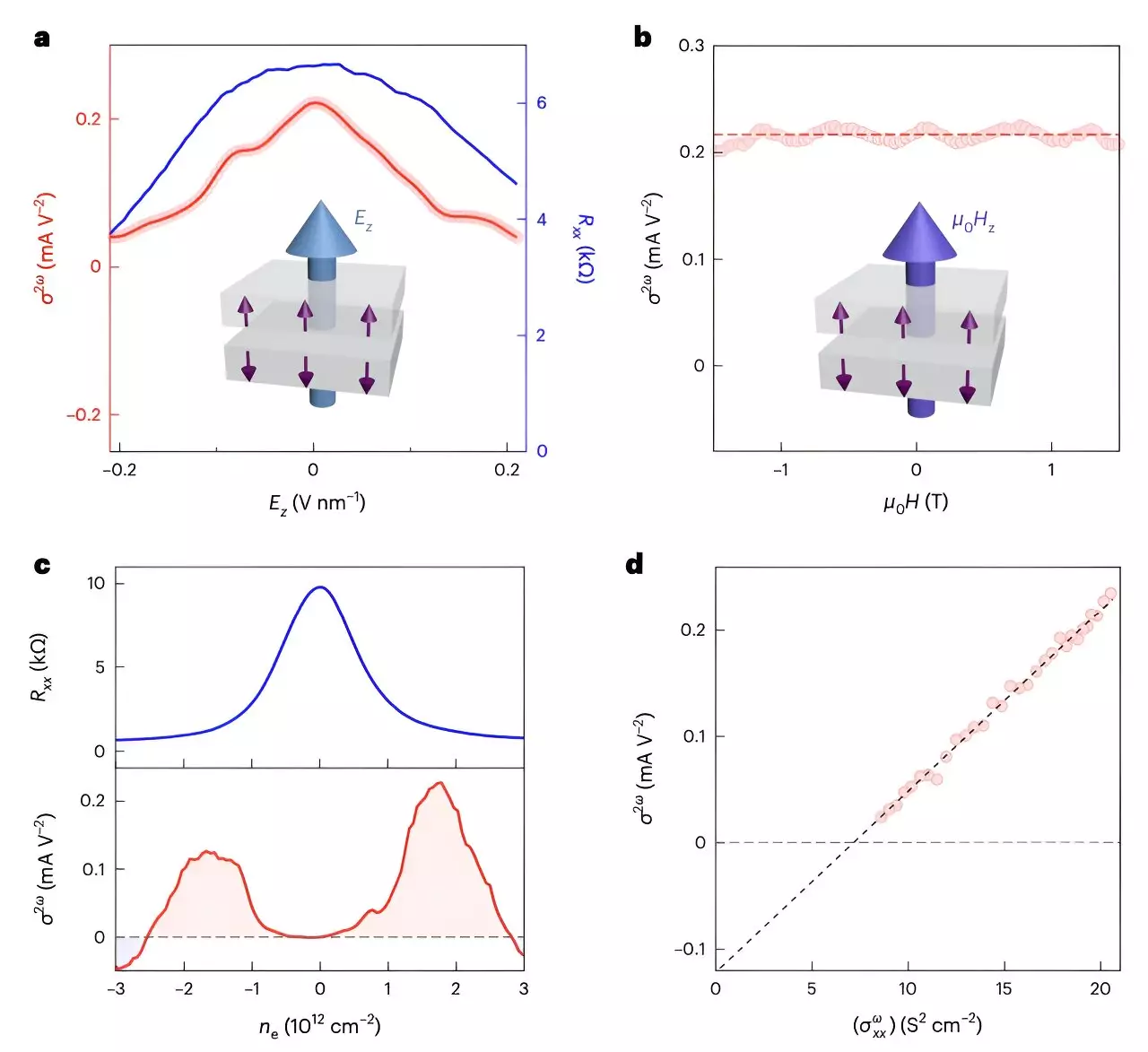Antiferromagnets represent a fascinating class of materials where the magnetic moments of adjacent atoms orient themselves in opposing directions. This configuration results in a cancellation effect that yields no observable macroscopic magnetism. The unique properties of these materials have captured the attention of researchers and engineers alike, particularly in the realm of spintronics and advanced electronic device development. Their ability to exhibit complex magnetic and electrical behaviors makes them promising candidates for future technologies.
Recently, a groundbreaking study conducted by a team at Harvard University focused on the antiferromagnetic material MnBi2Te4. This compound, notable for its centrosymmetric crystal structure, has sparked interest due to its unique properties and the intriguing potential for applications in electronics. The researchers discovered an antiferromagnetic diode effect within this material, a behavior that has broad implications for the future design and functionality of electronic devices.
The significance of their findings was published in the esteemed journal Nature Electronics, shedding light on the implications of this discovery for various technologies, such as in-plane field-effect transistors and devices capable of harvesting microwave energy. Essentially, the antiferromagnetic diode effect allows for the directed flow of electrical current within a device, marking a notable advance in electronic component design.
The diode effect, widely recognized in numerous materials, plays a critical role in the functionality of devices ranging from radio receivers to temperature sensors. This phenomenon is characterized by the ability of certain materials to facilitate current flow predominantly in one direction, ensuring reliable performance in electronic circuits. The exploration of this behavior within conductive materials lacking a center of symmetry—known as non-centrosymmetric polar conductors—has led to recently observed superconducting diode effects.
Building upon existing research, the Harvard team set out to investigate the manifestation of a similar diode effect in their focus material, MnBi2Te4. In their study, titled “Non-centrosymmetric polar conductors are intrinsic diodes,” the researchers proposed that such materials could be pivotal in nonlinear applications. Their findings confirmed the antiferromagnetic diode effect even in a centrosymmetric crystal structure, opening new avenues for research and application.
Technical Insights and Experimental Methodologies
The research team engineered devices utilizing even-layered MnBi2Te4, deploying two distinct electrode configurations for their experiments. The first configuration involved Hall bar electrodes, which are designed to measure the Hall effect through longitudinal current flow across transverse electrodes. In contrast, the second configuration featured radially arranged electrodes, enhancing the diversity of their experimental setup.
Through careful experimentation, the researchers documented clear indications of the antiferromagnetic diode effect, highlighting nonlinear transport phenomena across both electrode configurations. This meticulous approach involved a series of measurements, including a spatially resolved optical method and electrical sum frequency generation (SFG) techniques, which proved instrumental in confirming the presence of the antiferromagnetic diode effect.
In their analysis, the researchers reported substantial second-harmonic transport, a hallmark of nonlinear electronic devices, made possible by the balanced antiferromagnetic state found in MnBi2Te4. This discovery paves the way for utilizing the antiferromagnetic diode effect to develop new diode applications, such as in-plane field-effect transistors and microwave energy-harvesting systems.
The implications of this research extend far beyond academic interest. The antiferromagnetic diode effect holds the potential to revolutionize the design of antiferromagnetic logic circuits, microwave energy harvesters, and advanced spintronic devices. As researchers delve deeper into the characteristics and applications of this effect, a new era of electronic devices grounded in innovative magnetic materials may emerge.
The Harvard study not only corroborates the versatility of antiferromagnetic materials in electronic applications but also positions them as crucial components for the next generation of technological advancements. With ongoing research, the drive towards harnessing the unique properties of these materials could lead to the creation of high-performance devices, reshaping the landscape of modern electronics. As these discoveries unfold, it is clear that the intersection of antiferromagnetism and electronic device development presents a tantalizing frontier for scientists and engineers alike.


Leave a Reply